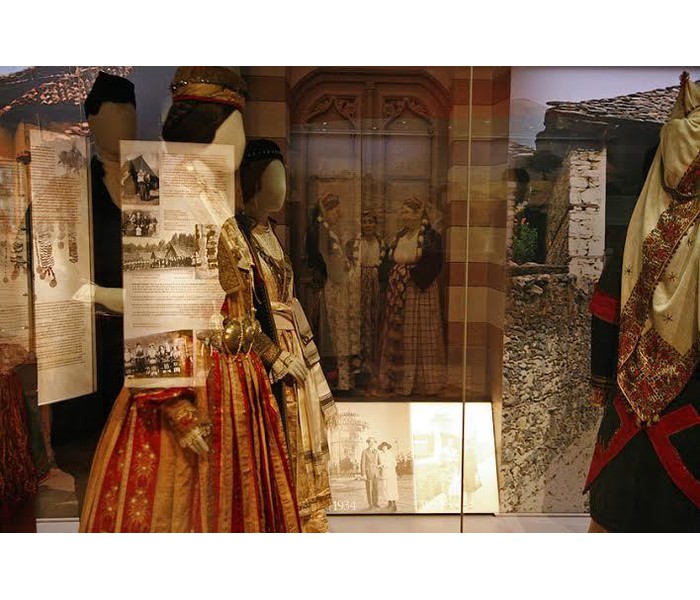Host Country Studies Trip to the Folk Life and Ethnological Museum of Macedonia-Thrace
February 5, 2015

Fashion designers take inspiration from many different sources,
including history, culture, art and music. For the past three weeks
Grade 9 students have been studying the art styles of the 18th century
including fashion. Paintings by Boucher, David and Ingres were presented
and portraits of famous ladies of the time, like Madame de Pompadour or
Madame Recamier, were examined and admired for their impeccable style.
On the 3rd of February we culminated this Unit on art and fashion by
visiting the
Ethnological Museum of Thessaloniki in order to study Greek traditional costumes from 1860 to 1960.
The
Museum’s Traditional Costume exhibition presents 55 outfits from
Macedonia, Thrace and neighboring areas worn in the pre-industrial age.
“The way in which these costumes developed was governed by the laws of
tradition” the museum’s curator told us. They were handed down from one
generation to the next, from mother to daughter, their style kept alive
from craftsman to apprentice.
While Greek traditional costumes did
not follow “fashion” developments, small changes took place at a slow
pace, because in traditional society any change had to be generally
accepted by the community as a whole.
It was an motivating trip. So
much so, that inspired by the amazing Aprons Greek women wore at the
time, our students decided to research the symbolisms of Apron Designs
further, create their own Aprons, and present the outcome of their work
during the Greek Independence Day school celebration.
Amalia Spiliakou
Host Country Studies Coordinator


